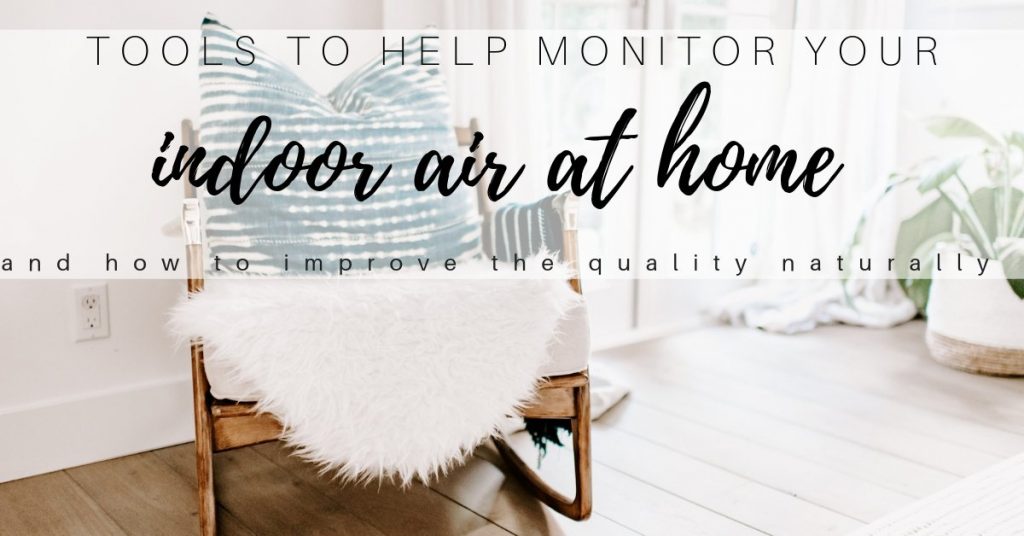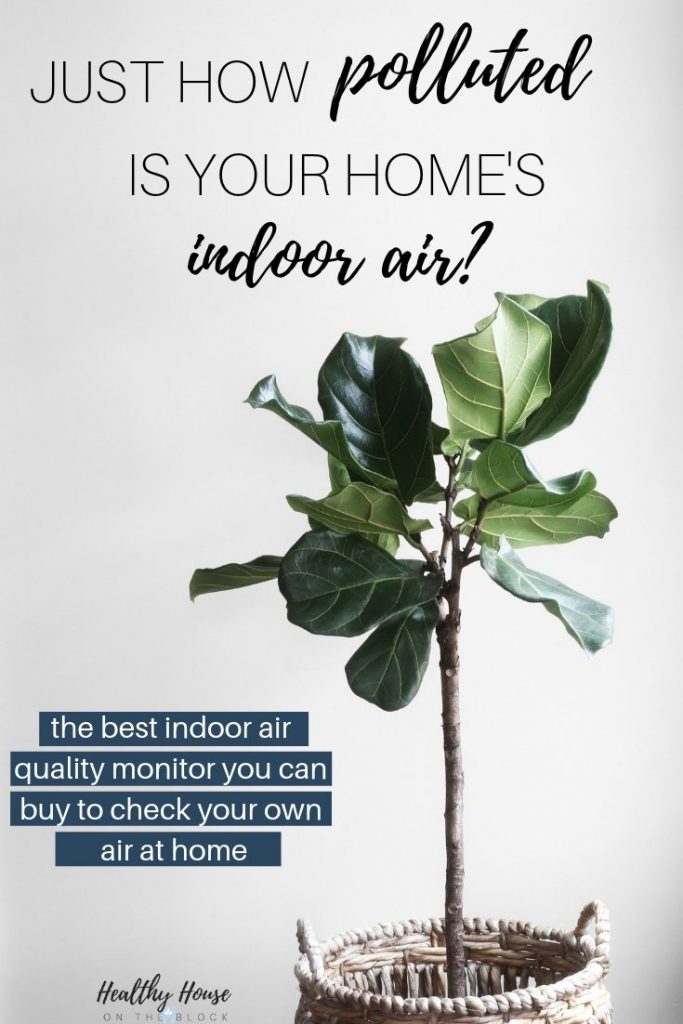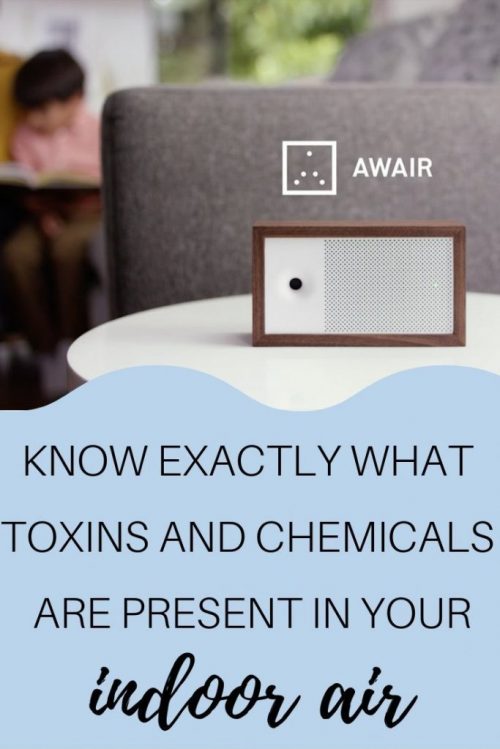
Have you ever wondered what is in your air at home? Many of us have no idea what the indoor air quality is inside our houses, but what we do know is that it’s polluted. In fact it’s more polluted than the outdoor air. The air inside our homes quickly becomes stale with little movement or dilution from outdoor air. And that air inside becomes affected my a number of indoor sources that are both within and out of our control. Factors like volatile organic compounds (VOCs), second hand smoke, carbon monoxide, radon and toxins like formaldehyde all contribute to our indoor air quality (IAQ). The Environmental Protection Agency (EPA) has stated that we now spend about 90% of our time indoors, in polluted, unfiltered air.
But how can we tell what is IN the air we’re breathing? With published studies and research being done about indoor pollution, we can’t just assume OUR indoor air is safe any more. But how do you know where to begin fixing indoor air and improving the indoor air quality at home? The very first step is to know what your indoor air quality problems are. Without the knowledge of knowing what is in your indoor air, you have no way to try and fix these issues, remove problematic sources and improve your home’s overall health.
Before we get to the technical tools and monitors that can help your home, there is one very important habit you can change immediately to improve your indoor air quality. Fresh air from outdoors is the the absolute number one way you can improve your indoor air quality. The amount of outdoor air that is brought into your home on a regular basis is the largest contributing factor to the air quality within your home. So make a plan to open your windows and properly ventilate your home to bring fresh air inside and allow toxic air to leave your home.
Indoor Air Quality Monitor:
This is one of the best tools you can incorporate into your home and daily routine. Not all that long ago, if someone wanted to improve their indoor air quality at home, they needed to contact a professional who had specialized testing equipment to test their indoor air. Once the tests were done, they needed a lab to analyze those tests. By the end, it could be an expensive diagnostic with a long wait time.
Fast forward to today, where you can put an indoor air quality monitor right into your home. While an indoor air quality monitor is not a complete replacement for hiring a professional with professional equipment, it can give you the peace of mind you need on a daily basis.
The Awair Indoor Air Quality Monitor is small device you can place in any part of your home. You can move it around to areas that are your most “lived in” spaces. From there you can monitor your air right from your smartphone. The Awair will monitor air temperature as well as the levels of chemicals, fine dust and humidity inside your home. It also monitors the air for carbon monoxide (CO2). Anytime there is a high level detected, you’ll be notified. From there your app will give you tips and ideas of how to fix this elevated level.
As you can see this is an exceptional tool to promote environmental health and wellness. How could you possibly begin to improve your indoor air if you don’t know what needs to change? Once you know what is causing your indoor air quality issues, it’s a simple job of reducing toxic products (like air fresheners) and improving indoor habits.
Radon Detectors
Recently, where I live in Minnesota, the rules and regulations for testing Radon have changed drastically. The good news is any professional test done is more closely monitored, the bad news is I had to study and take a test to allow me test Radon within my client’s homes. Long story short, I’ve had the opportunity to learn so much more about the health effects of Radon and how it can be prevented in the home.
Basically, Radon is everywhere; outside, in our homes, and within the earth. Radon ultimately comes from uranium, which is present in all rock and soil around the world. When Radon gas travels to the surface of the earth, it usually enters the air in small amounts and is mostly diluted (average outdoor reading for radon is 0.4 pCi/L). The problem comes in when our home’s foundation or slab are in an area with elevated radon gas. The home acts like a vacuum due to the tightly sealed nature of the house and the difference in air pressure from outside to inside. When this happens, the home can draw higher levels of radon into the home.
Radon is heavier than air and it tends to pool in the lower areas of the home. This means bedrooms, and other living areas on the lowest level can have potentially very high radon levels.
A radon test is the best way to get a quick picture of what is going on in your own home. You can order a short term test and administer it yourself or you can call a professional tester. Either way, getting a good idea of what radon levels are in your own home is powerful knowledge to have. The EPA websites recommend that anything over a level of 4.0 pCi/L should be mitigated, or removed from the house with a system.
You can learn more about Radon in this blog post and through my online course.

ALL YOU NEED TO KNOW ABOUT RADON IN ONE PLACE
Air Purifiers
Air purifiers have come a long way in the past few years. The technology of air cleaners has improved drastically and adding a purifier to your home can now reduce the risk of respiratory diseases and improve your indoor air. Alen is a company that offers several different solutions to indoor air quality problems. Their products are beneficial for reducing mold and mildew, reducing allergens and scrubbing the indoor air of potential problems.
Each filter has its own filter and can also improve the comfort of your home by reducing odors and improving airflow. I recommend these to families who have members suffering from asthma and/or allergies. They’re also a great option if you live in a home where a smoker once resided. The smell of secondhand smoke is not easily removed, but this device can help.
Alen has a few different models that are meant to improve specific environments that have very specific challenges. You can improve your indoor air even if you have pets (pet dander, bacteria from outdoors and pet fur) or if you live near wildfires and where there is an excess amount of smoke affecting your air.
Air Filters for HVAC and Air Conditioning

Depending on where you live, you likely have an air filter somewhere within your HVAC unit or your air conditioning unit. This is such a great tool that is often overlooked by homeowners. If you have a venting system within your home (as opposed to boiler pipes), you can easily filter a large portion of your air by using a high quality furnace filter.
By using an activated carbon filter, you can actually reduce the amount of bacteria in your air as activated carbon is meant to trap particles as small as bacteria. Some odors can also be reduced through an activated carbon filter, which will reduce your need for air fresheners in the long run.
Some of my favorite tips to use air filters to the maximum potential are:
- Purchase a box of your filters and keep them at home. This will prevent leaving a filter in for too long.
- Add a reminder to your calendar every 4-6 months to replace your furnace filter.
- Make sure you look at the arrows on your filter that indicate air flow and match them up with any arrows on your HVAC unit. Installing a filter incorrectly will bar hard on your HVAC unit as well as poorly filter your air.
- Add a few drops of essential oils to your furnace filter to freshen your home’s air naturally (I like Lavender, Purification and Thieves).
Natural Ways to Improve Indoor Air
There are also ways you can naturally improve your indoor air quality at home. Simple things like reducing the indoor humidity if necessary to opening windows and naturally ventilating your home. Below are some of my top tips to naturally improving your indoor air.

- If your indoor air is very humid, use tools and tips from this blog post to reduce the amount of moisture in your air. You want your indoor air to be right around 35%.
- Dust your home with a wet dusting method on a regular basis to reduce toxic house dust and eliminate chemicals that have entered your home at some time.
- Wet mop your floor to reduce bacteria, pesticides tracked in on shoes and dust particles on a regular basis.
- Use air purifying essential oils like Tea Tree Oil, Thieves and Purification in a diffuser.
- Vacuum your home with a HEPA filter vacuum to reduce dust.
- Naturally ventilate your home by opening windows regularly. You can even open windows in the winter for a few minutes at time to naturally ventilate the air.
- Run ceiling fans on a regular basis to get air moving around your home.
- Use vented fans in kitchens, bathrooms and laundry to pull moisture and toxins out of your indoor air while these rooms are in use.
- Add some air purifying houseplants like a rubber plant, fern, ficus or spider plant.
- If you’re doing a remodel, make sure you’re using a dustless install method and being diligent about the building materials your family is choosing. You can read a full write up on the healthiest building materials here in this blog post.
You can read in more detail about creating the perfect indoor humidity levels here and how to improve your indoor air quality here.
An indoor air quality monitor is the best solution to detecting pollution or toxins in your home’s air. The Awair Indoor Air Quality Monitor is a great solution to track toxins and chemicals. It also tells you how to improve your indoor air with simple steps.
You can also have a home consultation by a professional who will test your indoor air and send it in to a lab for testing. Unfortunately this can be costly and may not pinpoint a real problem.
The best action to take to reduce indoor air pollution is to bring in fresh air from outside (if your outdoor air is extremely polluted, you won’t want to take this route).







We have an air purifier and diffuse oils often. I’ve been adding a few plants in the home, and I always mop since our house is all tile. I’ve never tested the air to see what’s in it though. When we had our house built a few years ago, the builder suggested once a week opening the windows. He said even as short as opening them all and closing in the same order so they are only open as long as it takes to open each for fresh air.
I open my windows in each bedroom while I clean the bathrooms – it’s become such a habit, and I think it really helps with the indoor air quality.
What a coincidence I was thinking about items to look up for improving air quality in the home. It’s something we often overlook as we can’t physically see what’s in the air. A monitor would be handy to make sure I am aware of anything that needs addressing.
I’m so glad this was helpful! Yes, a monitor is an amazing resource to have!!
I’ve been really wanting an air purifier for awhile now. I’m also working on getting more plants in our home, and I use my diffuser daily!
All of it is so beneficial to your indoor air!
I have been looking for ways to improve air quality in my home. A monitor would be very useful!
That’s great, Patricia! Hope this helps!
Wow, I’ve never even thought about the air quality in my home besides, opening up the windows for fresh air. Thanks for the great article filling me in on all the different ways I can improve the air quality. And you’ve reminded me to get a carbon monoxide detector. The Awair sounds like a great option.
You’re welcome, Lauren! I’m so glad this is helpful — yes, the Awair Monitor is amazing for keeping track of what’s going on in your air.
Knowing the air quality of your home is so important! We spend the most time there!
I’ve never seen this product before but I think it’s looks amazing! Air quality is so important and we monitor it so little.
I definitely need to do a wet dust. It’s not something I do often enough. We have a humidifier and a purifier and I am so thankful to have both.
Me too! I absolutely put off dusting WAY too long 🙂
Thanks! I am not scared of toxins in my air. I am afraid for pollen and dust in the air as I can get sick from that.
Ooooo what a neat and handle contraption!!! I would like to think my air quality is ok, but you just never know! So need one of these